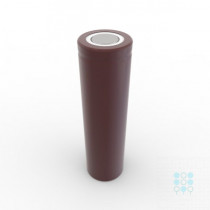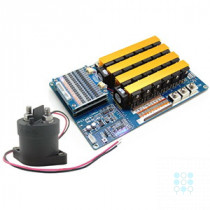This article is incomplete. We are currently gathering information to compose this glossary entry. To help improve it or discuss the issue, visit our discussion forum.
Contents
Summary
The watt (W) is a symbol to describe power, or the rate at which a battery or device can transfer energy. It comes from the International System of Units (SI) – a modern form of the metric system.
In SI, the definition of watt is 1 joule per second.
- 1 watt = 1 joule per second
- 1 joule = 1 watt times one second
An electromagnetic joule can be measured by the energy dissipated as heat when (one amp of current flows through one ohm of resistance) for one second.
Lithium-ion battery Watt (W) Calculators
Calculating wattage is easy. For lithium-ion batteries and electronic devices, there are three electromagnetic watt formulas we can use, given that we know two other variables.
Volts & Amps
Enter ohms, and volts to calculate watts.
![]()
This electromagnetic formula calculates watts for electric devices like batteries. It says one watt (W) equals one amp (A) of current flowing through an electrical potential difference of one volt (V).
To boil it down – watts equals volts times amps. That’s why watts are sometimes called volt-amps.
Volts & Ohms
Enter ohms, and amps to calculate watts.

This way uses resistance and volts. In plain English, this formula says
Amps & Ohms
Enter amps and volts to calculate watts.
![]()
Conversions
| 1 Watt | 1000 mW (milliwatts) |
| 1 Watt | 0.001 kW (kilowatts) |
| 1 Watt | 0.001341 hp (horsepower) |
| 1 Watt | 0.7376 ft lbf/s (foot pounds-force per second) |
Abbreviations
The femtowatt is equal to one quadrillionth (10−15) of a watt. Technologically important powers that are measured in femtowatts are typically found in reference(s) to radio and radar receivers.
For example, meaningful FM tuner performance figures for sensitivity, quieting and signal-to-noise require that the RF energy applied to the antenna input be specified. These input levels are often stated in dBf (decibels referenced to 1 femtowatt). This is 0.2739 microvolt across a 75-ohm load or 0.5477 microvolt across a 300-ohm load; the specification takes into account the RF input impedance of the tuner.
Possible confusion
Uses cases
Sed ut perspiciatis unde omnis iste natus error sit voluptatem accusantium doloremque laudantium, totam rem aperiam, eaque ipsa quae ab illo inventore veritatis et quasi architecto beatae vitae dicta sunt explicabo. Nemo enim ipsam voluptatem quia voluptas sit aspernatur aut odit aut fugit, sed quia consequuntur magni dolores eos qui ratione voluptatem sequi nesciunt. Neque porro quisquam est, qui dolorem ipsum quia dolor sit amet, consectetur, adipisci velit, sed quia non numquam eius modi tempora incidunt ut labore et dolore magnam aliquam quaerat voluptatem.
Related
Watt-hours


